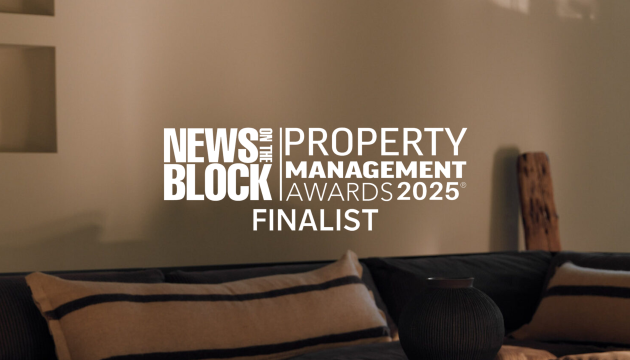“Quite often, you come up with great ideas, but when we are all on Zoom, it’s really hard. We cannot have a great conversation. We cannot debate well.”
― ERIC YUAN, ZOOM CEO, AUG 2023
CEO Yuan’s leaked meeting revealed Zoom the product does not allow Zoom the company to “build as much trust or be as innovative as in the office.” In an ironic twist, Zoom, the virtual communication giant, has said that employees must be in the office twice a week – minimum.
In 2024, offices remain vital for collaboration and innovation. The truth stands: there is a vast untapped value in the asset class.
As recent research by AEW reports, new investments in prime offices are projected to generate the highest annual returns of any sector over the next five years.
This leads to the question…
Why do people take office space? While the office market obsesses over features: it remains far too quiet about benefits.
Cutting through the confusion
Amidst industry noise of specifications and tick boxes, the true value of office space easily gets lost. The concept of ‘product definition’ or ‘market-fit’ is rare. We often overlook the fundamental reasons why people seek physical space.
People who take offices, do so to grow their businesses. To create culture, to train, to learn, to collaborate; they want to create a base or a home for their brand. Offices are a place:
- Where you’re never far from someone to learn from
- Where great ideas happen accidentally
- Where you can grab dinner and drinks with colleagues after work
- Where a new recruit can bond with their team
- Where clients can visit and engage meaningfully with you
These are the problems that the office solves.
Therefore, instead of an increasing number of accreditations and statistics – the product should focus on a narrative, a service and an offering that responds to these precise needs.
Marrying offering with need
The key to unlocking the untapped value of offices lies in aligning the offering with the needs of businesses. It involves mastering the customer journey, stripping out any friction, and predicting customer trends ahead of time.
Crucially, the management strategy should seek to continue what has been built. It should provide the business with a daily dose of what the business needs; whether that be a turnkey ready space with enhanced amenity offerings, or a hotel-level service with a dedicated House Manager.
Management strategies should prioritise flexibility and bespoke service – providing individual businesses with the specific resources they require to thrive. Rather than a cookie-cutter approach, the offering must reflect the unique character and brand identity of the occupant.
For example:
- Customisable Office Layouts: Follow the 70/30 fit-out rule, furnishing 70% of the floorplate and leaving approximately 30% as swing space for tenants to decide how they want to use it.
- Branding Opportunities: Offer chances for tenants to integrate their branding elements throughout the office, like custom signage, digital display screens, or themed meeting rooms.
- Flexible Amenities: Repurpose spaces for different needs, such as a day-time café/evening bar or a wellness studio/film screening area, to provide versatile amenities.
- Community Engagement: Ask occupants what type of events they would benefit most from; collaborate with tenants offering relevant products or services for enjoyable shared experiences.
- Attention to Detail: Partner with local artisanal businesses for office products like coffee or hand creams, reflecting the unique character of the area and adding a touch of luxury.
Repackaging for maximum ROI
With the right packaging, offices become universal drivers of productivity and growth. By leading with what businesses truly want and need, offices reclaim their position as indispensable assets in the corporate landscape.
Like the hotel model, offices must use their values as a constant that customers can anchor to in a changing world.
At TSP, we are witnessing many landlords changing their management strategy and redesigning customer experiences. Short term, this can lead to some upheaval and volatility: it is new and there is an element of trial and error.
Long term, it leads to a better product, happier customers, and more predictable revenues.
Featured Stories & Insights
 17th November 25
17th November 25
Lessons Learnt from 2025 | by Zac Goodman
The market shifted (again), expectations changed (again), and the way people use space evolved in...
Read More 10th November 25
10th November 25
From Vauxhall to Value: How Aldgate Became London’s Charity Heartland
TSP’s Jonathan shares his perspective on why Aldgate has become the go-to destination for London’s...
Read More 30th October 25
30th October 25
Five Commercial Property Trends for 2026
As 2025 comes to a close, the UK commercial property market has been shaped by...
Read More 13th October 25
13th October 25
TSP Named Finalist at the 2025 Property Management Awards
LONDON, 13th October 2025 – TSP has been shortlisted for Boutique Property Management Company of...
Read More 1st October 25
1st October 25
Greener Offices for Charities
Sustainability has moved from being a “nice to have” to an essential requirement for charities,...
Read More 29th September 25
29th September 25
Community in The Office: Why does it matter?
The Spaces to Places: Voice of the Customer 2025 report makes one thing clear: people...
Read MoreView all